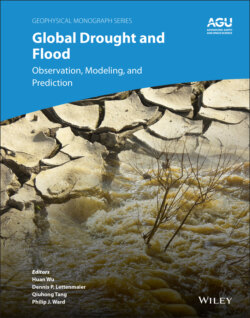Читать книгу Global Drought and Flood - Группа авторов - Страница 26
1.6. CONCLUSION
ОглавлениеRemote sensing offers a new way to monitor drought and develop drought models that would consider multiple variables at a global scale. Limitations of measurements in situ, such as nonuniformity and lack of measurement, are now resolved by multisensor remote sensing frameworks. Moreover, the introduction of multi‐index and composite drought monitoring has enhanced drought detection capabilities. This further extends drought analysis by allowing scientists to investigate the extent of effects of drought on other natural processes after the period of drought recovery. This chapter highlights different variables that contribute to formation of drought and discusses numerous satellite products that can offer valuable data as input for different categories of drought models. The critical role that precipitation as snow plays in the occurrence of drought is discussed, including that its consideration into drought modeling has been hindered due to the lag between its occurrence and changes in surface water. Recently, several composite drought‐monitoring frameworks have been proposed to address this issue and have shown promising results. It is argued that recent shifts in rainfall patterns and increases in temperature happen in parallel with increasing severity and frequency of concurrent heatwaves and droughts. Anthropogenic hydrological change has altered the recurrence of extremes and this hinders monitoring systems, which are developed based on stationary assumptions of natural variables. Therefore, more uncertainty is introduced into modeling drought‐monitoring systems if the stationarity assumption is to be retained. In addition, there is a growing need to assimilate satellite‐retrieved information into land surface, hydrological, and climate models. In order to do so, the uncertainty associated with satellite observations should be quantified in such a way that it can be used in modeling. Moreover, large database records should be designed to be accessible to both the scientific and the operational communities.
